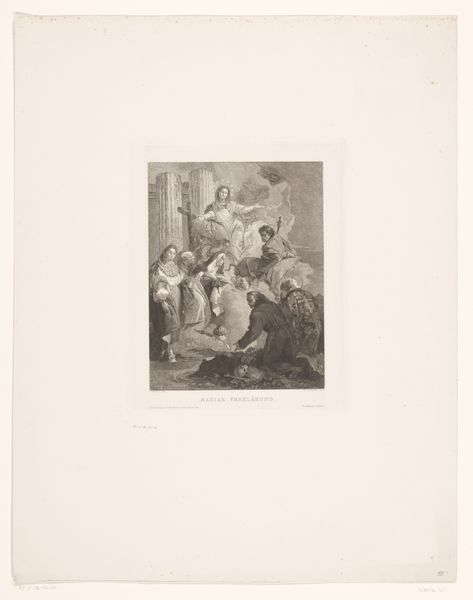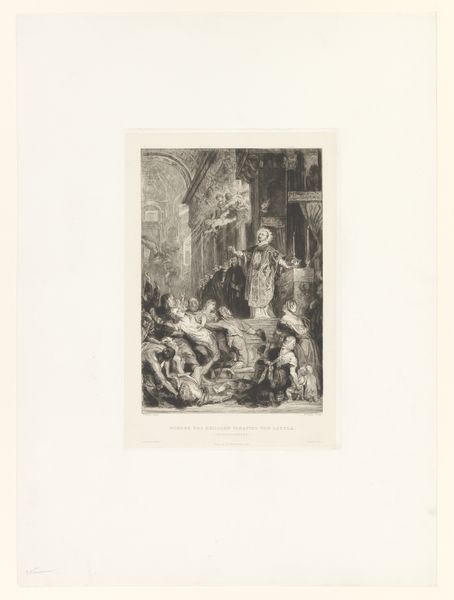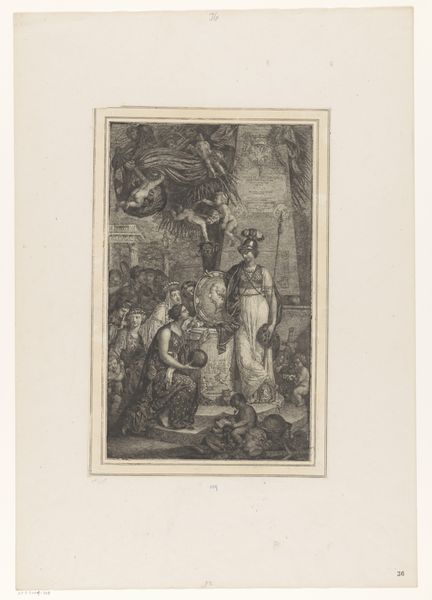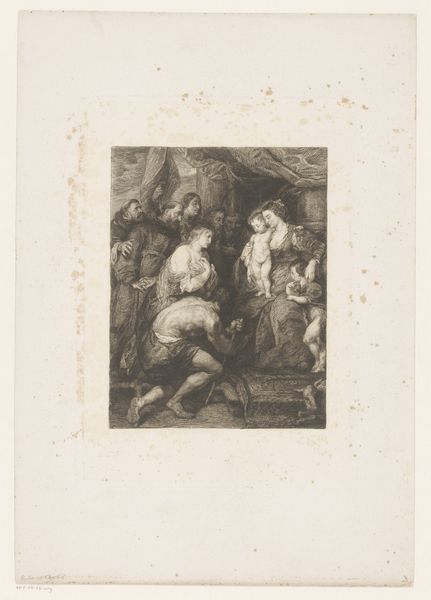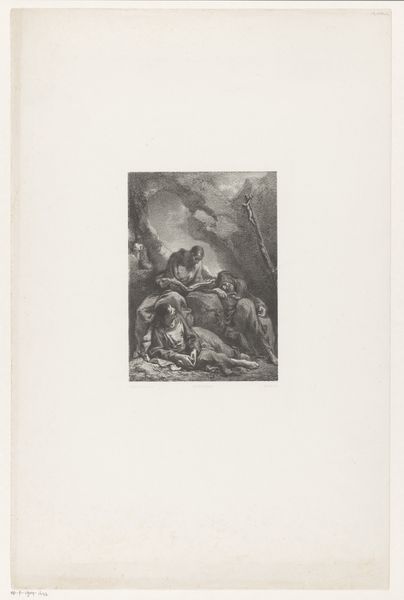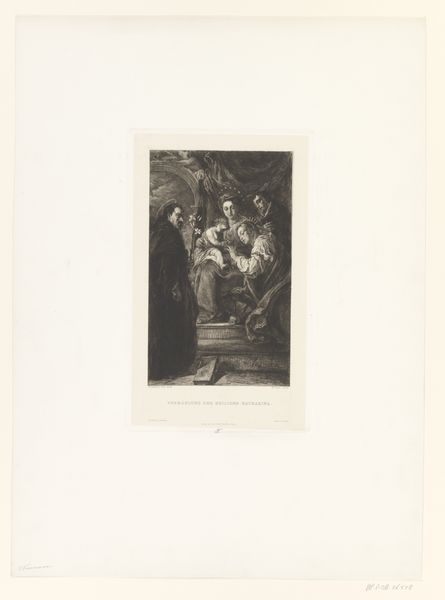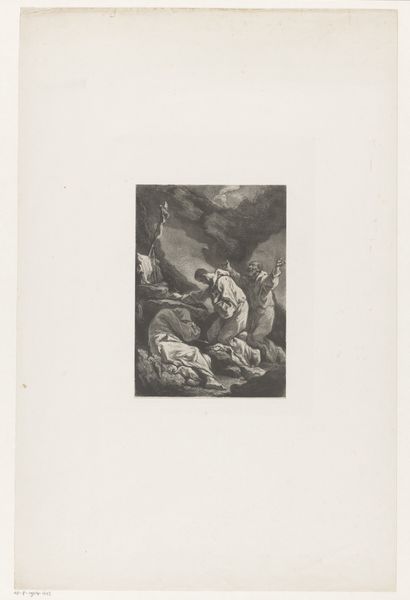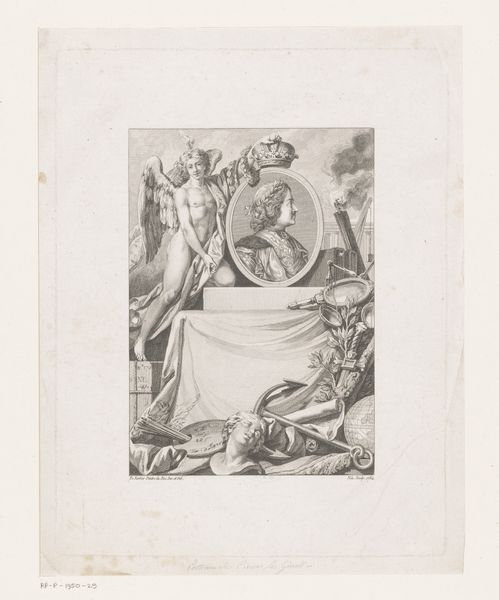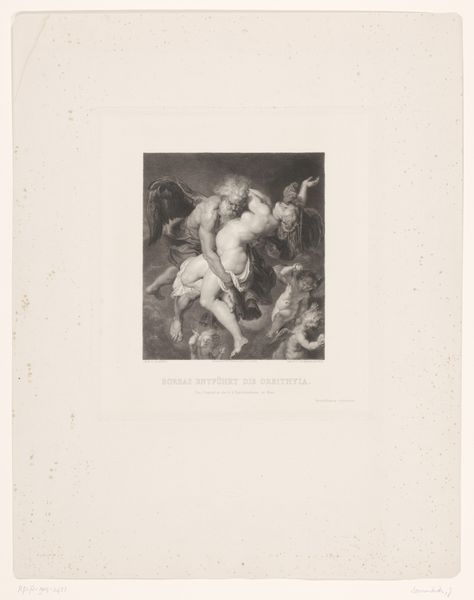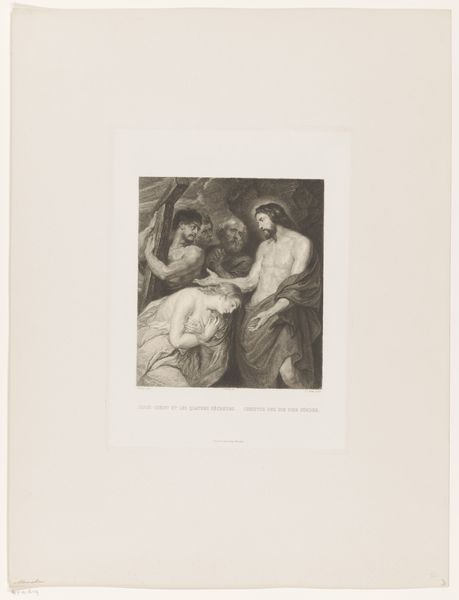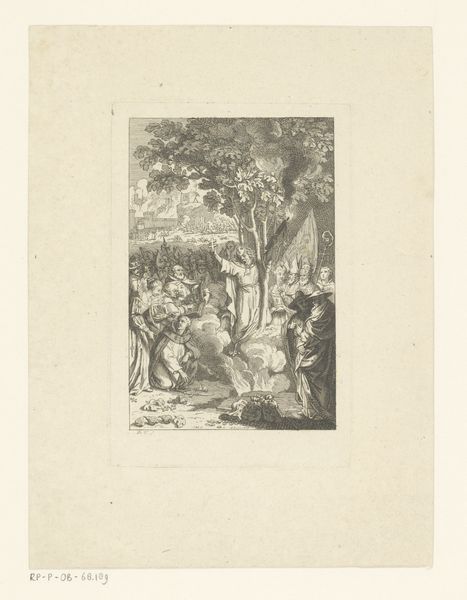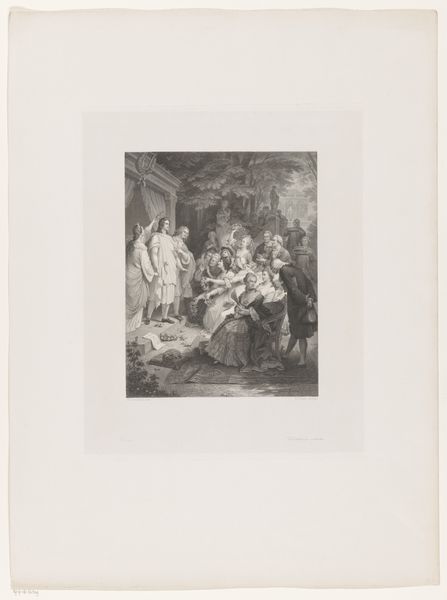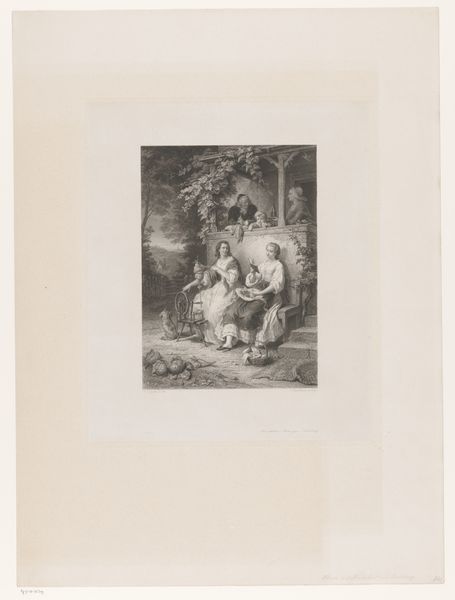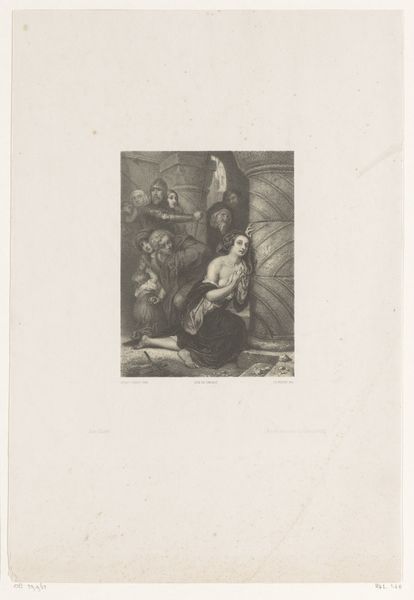
drawing, print, paper, engraving
#
drawing
#
baroque
# print
#
old engraving style
#
figuration
#
paper
#
history-painting
#
engraving
Dimensions: height 245 mm, width 163 mm
Copyright: Rijks Museum: Open Domain
Curator: I find myself immediately drawn to the intricate detail of this print. It is a Baroque engraving created by Michel Dorigny in 1643, titled "Hercules en Omphale". The scene unfolds with a captivating role reversal. Editor: The very high contrast within such minute engraving strokes does give the entire piece a dramatic and intriguing feeling, despite its relatively diminutive scale. The paper's texture surely had some part to play. Curator: Absolutely. Dorigny masterfully uses the engraving technique to create a textural contrast between Hercules’ muscular form and Omphale’s soft features. This contrast emphasizes their individual characteristics within the complex dynamic of the scene. I see strong compositional balance achieved through the symmetry of their poses. Editor: Right, that role reversal strikes me as the core interest here; traditionally, one expects to see Omphale engaging with a softer, domestic material such as textiles or fibres. It would be interesting to trace the types of metal tools utilized to engrave and incise these very deliberate gendered activities within one single copper plate. Curator: Considering the context of the Baroque period, the role reversal is not merely a superficial alteration, but an exploration of power dynamics and perhaps even an allusion to the destabilizing effects of love. Editor: It pushes the boundaries of the typical heroic narrative, too. What this engraving offers, with its inversion, is to showcase this blurring or disrupting of typical labor divisions. I am wondering how this type of depiction impacted the broader engraving practice at the time, considering their labor force. Curator: That is such an intriguing consideration that definitely calls for a deeper look. Considering Dorigny’s skills, the composition’s layers and thematic elements all come together and provide a lens to contemplate about a different take of mythology, power, and representation. Editor: Indeed, engaging with the materiality, one gets more attuned to what it might have meant, within and beyond its immediate art context, to depict those in power being occupied with labour associated with "femininity," specifically in the era's printmaking production processes.
Comments
No comments
Be the first to comment and join the conversation on the ultimate creative platform.
